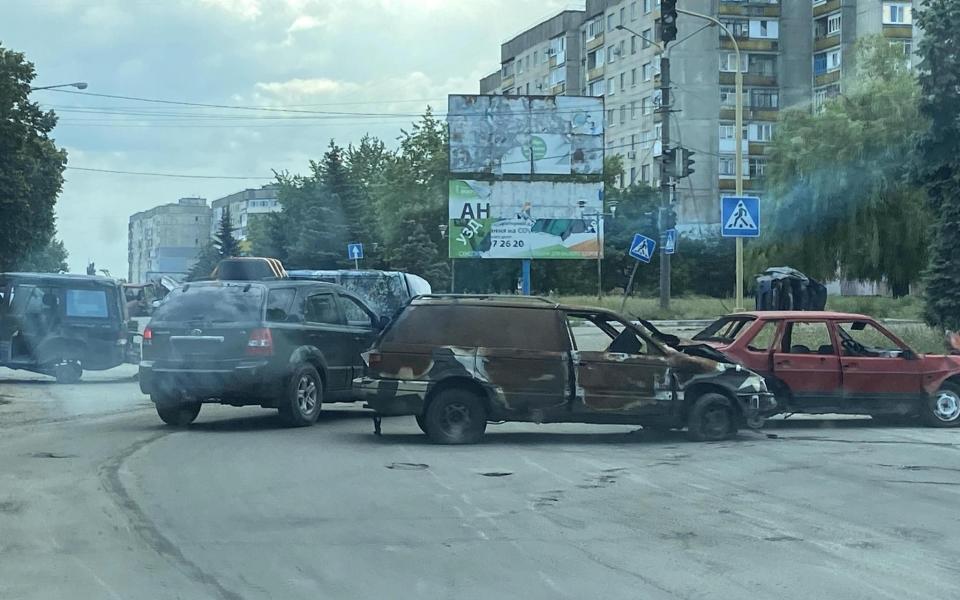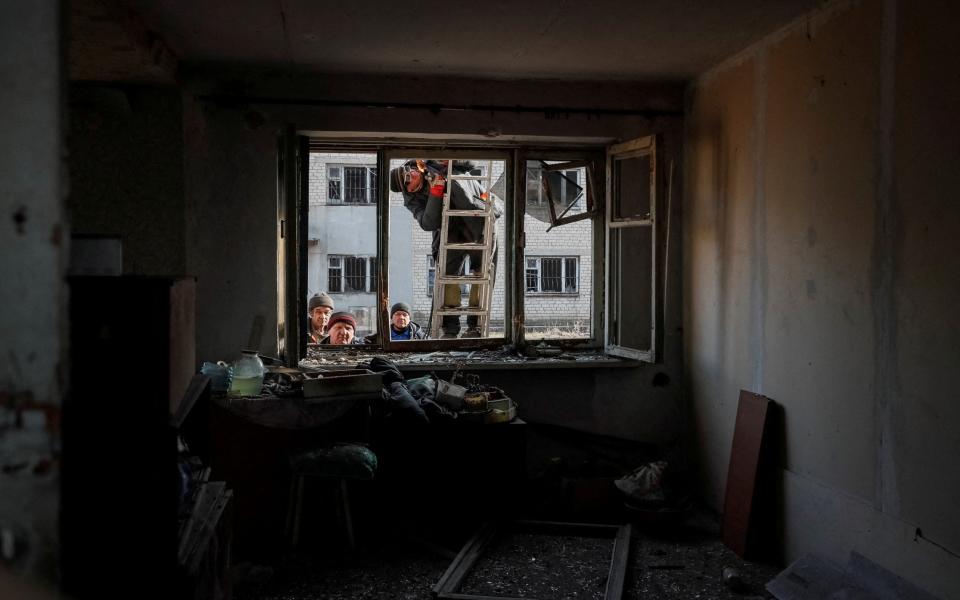Inside the elite extraction group rescuing civilians from Ukraine's most dangerous warzones

The potholed dirt road in and out of the besieged Ukrainian town of Novoluhanske last week was impossible to cross without the risk of being struck by heavy artillery fire, but there was no other escape route for terrified residents trapped in their basements for months.
Racing through the dust as fast as their vehicles could take, Andy Milburn, a British-American former US Marine colonel, and his team of military veterans knew they could be seen by Russian drones or spotters on the surrounding slag heaps, but had decided their humanitarian mission was worth the gamble.
“We wanted to get in from behind the town so we were masked from Russian artillery, but the Russians have every surface road dialled in [registered], so very quickly within seconds they can bring rounds down on vehicles travelling on it,” he said.

As the convoy bounced towards the town, shells pounded craters in the fields on either side.
“It seemed to be what we call harassment and interdiction rounds – one round every minute or so. Those are worrying because you never know where the next one is going to land, and it looked like a couple were phosphorous,” said Mr Milburn.
Anything could go wrong, but the rescuers forged on. They had been told of a group of civilians, including children, under bombardment less than a mile from the Russian frontline and in desperate need of extraction.
“You’ve got to press the ‘I believe’ button. because otherwise you can second-guess yourself to death,” Mr Millburn said. “We didn’t know these people but it’s trust tactics and you take sensible precautions.”
His team of special operations veterans are volunteers with the Mozart Group – running daily evacuations from Ukraine’s war-torn Donbas region and riding in small, unarmed convoys into conflict hotspots that few would dare to enter.

They navigate the current hell-scape of the Donbas confident in their military expertise from decades of experience in armed forces around the world, but with the full knowledge of the extreme risks.
The Mozart Group, which has 20-30 volunteers in its ranks, was founded by Mr Milburn, who was commander of a combined special operations task force in Iraq to counter ISIS, and a former commanding officer of the Marine Raider Regiment. He originally hails from Lymington, Hampshire.
He said the group’s members were drawn together by a “sense of purpose” and “moral clarity” that was missing in the Iraq and Afghan wars. “Here we are definitely on the side of right,” he said.
Funded by donations, the group also trains the Ukrainian forces and conducts mine clearances but does not engage in fighting.

Novoluhanske in Donetsk lies on the cusp of territory occupied by Russian forces as they slowly advance across the eastern Luhansk and Donetsk regions to occupy Donbas.
Surrounding villages and towns have been flattened as Russia fires its seemingly unlimited stocks of heavy artillery indiscriminately at civilian targets regardless of the human cost.
Nobody yet knows the scale of the humanitarian disaster as civilians – trapped by the unexpected ferocity of Russia’s advance - hide hungry in the ruins of their homes.
The Mozart Group’s gambit last Thursday paid off. Working together with a local NGO, they saved 27 lives.
“When we came into the town we saw groups of people, they had got the word,” said Mr Milburn.

But as evacuees gathered, he was astonished that not everyone wanted to leave. Some were afraid of leaving their lives and homes behind when they had nowhere else to go; others, such as the elderly, thought they would struggle on the road; and a handful remained hopeful that peace would come, even as that looked increasingly unlikely.
A barrage of incoming shells was making the team “twitchy,” but two young children played nearby – apparently oblivious to the danger. Their mother insisted the family was going to stay.
The process of loading up the vans with people and luggage then took an hour – a nerve-wracking timeframe that offered the Russians time to respond.
As they took off, they could hear artillery striking the only route out, realising they had been rumbled. “Obviously they knew, and the rounds were closer than we wanted,” he said.
“As we were going down the road the artillery was bracketing – hitting one side and then the other so one round landed in the ditch quite close to the lead vehicle. It was very lucky. I must have been a delayed fuse because it buried and there wasn’t a huge explosion.”

After a tense 15-minute drive, they reached the relative safety of trees.
It’s not been their only close call working in a volatile and unpredictable environment.
Mr Milburn’s colleague, an Irish military veteran who did not wish to be named, recalled an uneasy moment near Lysychansk when more evacuees than vehicles turned up and they had to scramble to find more transport as bombs rained down.
A local contact provided the vehicle they needed, but an armoured personnel carrier tried to hit them with a 30mm cannon as they escaped.
“We could hear repeated fire cracking over the roof of the vehicle and it was tracking us,” he said.
The group helped rescue 33 civilians that day, including a paralysed woman.
Standing by as people remained trapped was not an option, he argued. “That old lady who couldn’t walk, nobody was bringing her out,” he said.
“My wife has warned me not to get blown up or shot or captured but the reality is that if we didn’t go there then those 33 people would not be out. That’s how you have to justify it to yourself,” he added.
“These people are there and nobody else is going in, and that’s what we’ll do again.”

 Yahoo News
Yahoo News 